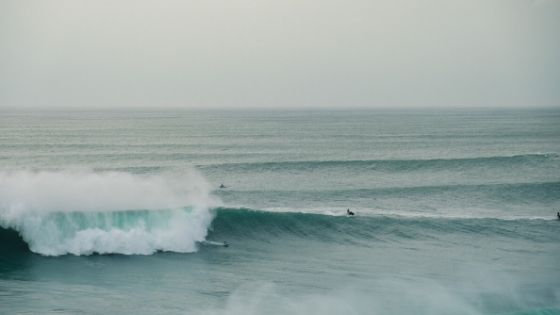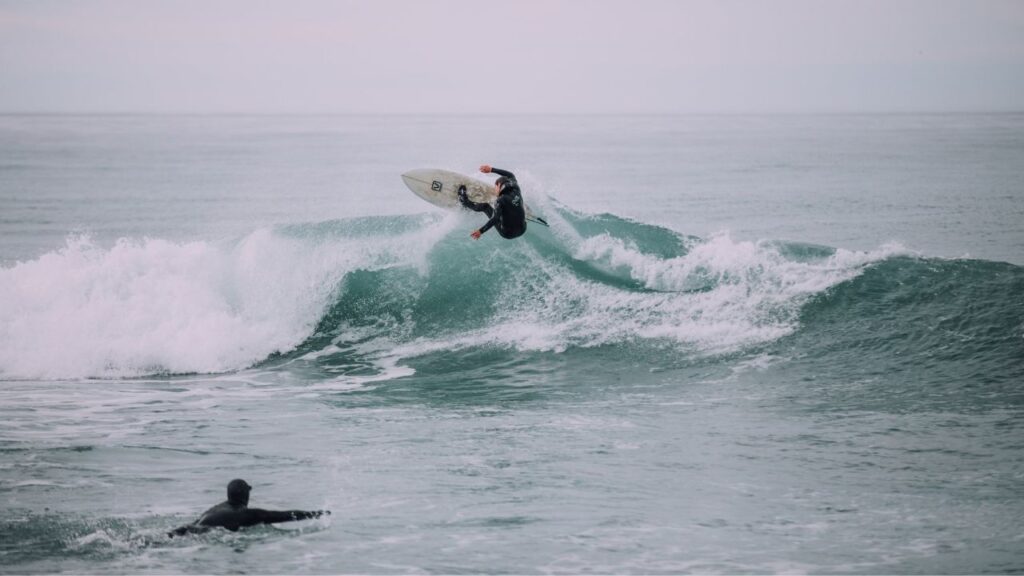Is Surfing Dangerous? The Most Dangerous Aspects of Surfing
When asked: “Is surfing dangerous”, it’s hard to give a clear answer.
But surfing isn’t as dangerous as it may seem. It really depends on how many risks you are willing to take. If you do your homework and identify the dangers of surfing before jumping into the water, surfing is both healthy, fun, and very safe, even for beginners.
If you do not know what the danger are, then read this article that describes the most common dangers of surfing, and gives tips and tricks for you to stay safe in the water.
1. You
When dealing with sports that can involve high risk it’s always a really good idea to come prepared. You have to know what you are up against, and how to avoid all dangerous situations.
You can start off by reading this article on How to Surf. This way you can learn how to read the ocean, how to identify the lineup, and how to make it outback.
It’s Important not to underestimate the power of the ocean, so make sure that you do everything in your power to prepare your body for surfing
Eating right and doing yoga are all aspects that help improve your chances of avoiding the risks of surfing. Surfing demands a high level of stamina and flexibility, and keeping these crucial things in check will most certainly give you a more secure surf session.

2. The Wave
A breaking wave is essentially pure energy exploding, and the human body can quickly get overpowered. Big waves can break bones, pop eardrums and knock you unconscious, and in the worst-case scenario cause death.
Always know your limitations, and never let your friends make you do something stupid. If you don’t have any experience with big waves, don’t try to be a big wave surfer.
If you are standing on the beach, and you are uncertain, don’t go out in the water. Don’t listen to all the: “go big or go home”- talk. Respect the ocean, and do not take any chances, both for your own safety, and others.
3. The Hold Down
Drowning is one of the more dangerous aspects of surfing. Being hold down by one or more waves is the main cause of drowning, and even experienced big wave surfers sometimes experience dangerous hold-downs.
Always stay calm during a hold-down. The more you panic, the more oxygen your body uses, so the faster you will need air. If you surf a lot, you will get used to being underwater, but if you are new to the game, just try to relax.
Some surfers imagine their “happy place”. It could be on the couch watching tv, lying in their bed, or even sitting on the toilet- whatever makes you relax.

4. Marine life
They look dangerous, but in reality, sharks are not as big a threat as many think
Even though it’s often a pleasant surprise when the line up is visited by true locals, some of the inhabitants of the ocean can pose a threat.
The great white shark is the king of the ocean, and as such, it is the most feared by surfers. Many surfers have been attacked by sharks, most noticeably is perhaps Bethany Hamilton who lost an arm to a shark and Mick Fanning who got attacked during a surfing event in Jeffreys Bay.
Shark Attacks are extremely rare but don’t take any chances. If you spot a shark in the lineup, exit the water immediately.

5. Localism
The term Localism is used when local surfers act hostile and unfriendly towards visiting surfers. Some of us have been a victim of the phenom in some shape or form, but we can all agree that it’s not the most glamorous part of the surfing culture.
The most notorious and well-known surf gangs are perhaps The Wolfpack and The Black Shorts in Hawaii, The Brah Boys in Australia, and The Longos in Los Angeles. But the fact is that almost any region in the world has its share of retards.
A simple trick is simply to give respect and don’t be a loud, wave hogging idiot. Be polite, and let the locals go on a couple of waves before you start your engine. Don’t drop in on anybody, and spread positive vibrations.
6. Other Surfers
Colliding with other surfers poses a significant risk. Most of the times nothing serious happens, but still, this is the one thing that accounts for the most accidents.
In surfing certain rules apply, and it’s important that everybody in the lineup follows these rules. In short, be aware of other surfers, and always keep your distance.
Never take off on a wave that other surfers are already riding on, and never let go of your board. When paddling out, take a longer router, so that the surfers that are catching waves don’t hit you.
And always, always, always be friendly, polite and humble, especially when you are a visitor. This is a good rule of thumb in real life as well.
7. The Leash
If the leash breaks and you are separated from your surfboard, things can get dangerous. If you don’t have enough stamina to swim to shore chances are you will drown. So don’t depend too much on your leash to save you, and always have enough power to swim to shore without a surfboard.
Leash tangles are perhaps more annoying than dangerous, but it’s still something that makes life hard on surfers. In extreme situations the leash can be wrapped around jagged reef during a wipeout, holding the surfer underwater.
The reef can be razor-sharp, so be careful at low tide
7. The bottom
Surfing a shallow reef can be a really dangerous experience. The jagged and sharp reef can cause serious injuries, and colliding head first with reef can even be deadly.
If the reef is coral it can cause even more harm. If you fall on a wave the razor-sharp reef will cut your skin, and leave small pieces of coral behind. If not removed, the coral infects the wounds.
Surfing a beach break can seem a little less dangerous, but compressed sand is as hard as concrete. Never wipe out head first, and be careful at low tide.

9. Riptides
Riptides are a strong current that sends water away from the beach. It acts as a flow of water, that can send both surfers and other beach guests out to sea in a matter of seconds. The strong current makes it impossible to swim directly to shore, so the best advice would be to swim to the side, where the current isn’t as strong.
Sometimes riptides are not caused directly by waves breaking on the shore, but by the massive amounts of water flowing in the ocean. This causes a strong current along the coastline and can drag surfers away from the line up with relatively high and consistent speed.
It requires a lot of paddle effort, and sometimes sheer willpower in order to paddle back into position or back to land.
10. Pollution
Even though surfers rarely get sick from surfing polluted water, it is something that is very real. Surfers have died from Staph infections caused by surfing in polluted water, and in general filthy waters are a major health concern for surfers.
The rule of thumb is that the water is most polluted after a rainstorm. During heavy rain, the pollution from land flushes into the sea, creating filthy lineups. So if your local break suffers from pollution, wait until 3 days after a rainstorm before jumping into the water.
If you can’t wait 3 days until hitting the lineup, remember to shower immediately after the surf session. And try to stay away from storm drainage pipes.
11. The Sun
Because of the strong sun, surfers are tanned. But it comes with a price
When surfing your skin is extra exposed to the sun’s radiation. The water acts as a mirror that reflects the radiation from the sun, and the salt will dry out your skin much faster than normal. In fact, it is estimated that more surfers die from skin cancer than from drowning.
If you don’t know how to avoid being fried in the sun or how to treat a sunburn, read our article When The Sun And Surf Go Bad. Here you will find some easy tips and tricks on how to keep your skin safe.
12. Changing Weather
When you paddle out its 3 feet and fun, but in a matter of minutes, it’s 10 feet and super scary. The weather can be really unpredictable, and the changes in the weather almost always affect the surf.
The scariest situation is when surfers are trapped in the lineup. If a large swell suddenly appears taking surfers by surprise, some surfers can’t reach the shore because of the size of the waves breaking.
Lightning can also be quite a concern. After all, surfers are more vulnerable to lighting sitting in the middle of the ocean. If you spot lightning, get out of the water instantly.
Luckily most surfers check the weather forecast religiously, but if you don’t make this a part of your daily routine.
So how dangerous is surfing really?

As mentioned it’s hard to claim that surfing isn’t dangerous. But the fact is that you shouldn’t worry too much, surfing is both good for your mind, soul, and body. Just be aware of the things that may harm you and others, and you will be just fine.
In fact, surfing is probably safer than walking your dog or going to a party. So When asked if surfing is dangerous, all things considered, we would say no. Just respect the ocean, the locals, and be aware of what you are dealing with.
That’s our list containing the dangers of surfing. We hope you enjoyed it, and if you have any questions, we will be happy to answer any of your questions in the comment section below.



